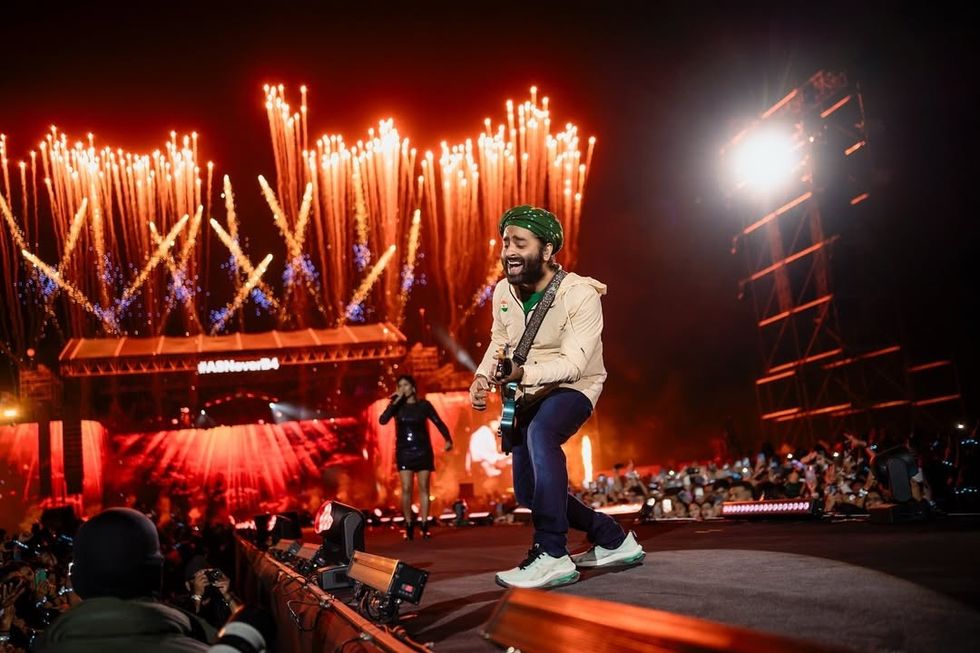JUST as Kashmir is known for its uniqueness, the region’s cuisine, too, is celebrated as special.
Kashmiri cuisine is not just about food, it is a celebration of life where traditions, memories and flavours are mixed to present the perfect Kashmiri spread.
Food is central to Kashmiri social life. Whether it’s a small birthday party or a grand wedding, one thing that can be guaranteed is the presence of an elaborate meal complete with various types of meat and seasonal vegetables.
While the cuisines cooked during the summer consist of fresh leafy greens that are cooked along with meats or fish, winter cooking is all about smoky flavours. It’s a common sight to see the women of the family drying vegetables and preserving fruits in the months of September and October.
While better connectivity has ensured there’s no scarcity of fresh produce during the harsh winter months, there’s still a market for dried and smoked meat and fish.
One winter special is smoked fish known locally as ‘farrigad’ and dried fish called ‘hokhegad’. Kashmiri cooking is an amalgamation of influences from the Indian subcontinent, Persia, China and from central Asia.
It is said that chefs from Samarkand were brought to Kashmir during the Timur invasion. They are believed to have influenced Kashmiri cuisine to a great extent, lending the dishes rich flavour and delicious aroma.
In her book Multiple Flavours of Kashmiri Pandit Cuisine, Annapurna Chak writes, “Kashmiri cuisine has evolved over years. The first major influence was the food of the Kashmiri Pandits, the Hindus of the Valley. The cuisine was then influenced by the culture which arrived with the invasion of Kashmir by Timur from the region of modern Uzbekistan. Subsequently, Kashmir and its food have been strongly influenced by the cuisines of Central Asia, Persia, Middle East and Afghanistan.”
She adds: “The two culinary styles that are predominant in Kashmiri cuisine are those of the Kashmiri Pandits and the Kashmiri Muslims. The basic difference between the two is that of the liberal use of asafoetida and yoghurt among the Hindus and onions and garlic among the Muslims – all of which impart a distinct flavour.”
Rice is the staple grain and goat meat and freshwater fish are consumed in large quantities in the Valley. Kashmiri cuisine is predominantly non-vegetarian, such as Roganjosh (goat meat in chillies), yakhni (goat meat or chicken in yoghurt) and macch (Kashmiri meatballs).
There are also some truly lip-smacking vegetarian delicacies such as the dum aloo (spicy potatoes) and Modur Pulao (sweetish rice dish). Dishes made are heavy on spices. Throughout history, Kashmir has been best known for growing the most expensive spice in the world – saffron – which is the main ingredient in the Kahwah, a tea that’s a part of any feast.
The Kahwah is a green tea made with saffron, spices, and almonds or walnuts, and it is usually served after a feast. Chak, in her book, says that the best way to bring out the saffron flavour in the dishes is to “dry roast the strands lightly on a mildly warm griddle, crumble them and then soak them in a tablespoon of hot milk or water before adding to the dish to be flavoured.”
Saffron is also used to marinate meat. During winters, when the temperatures dip, a lot of meat dishes are prepared to keep warm. Meat is usually marinated in curd or saffron milk for hours, sometimes even up to two days. Kashmiri cuisine also use a number of other spices such as fennel seed powder, cardamom, star anise, and dry ginger powder.
The legendary wazwan, a multi-course meal, is a point of pride for the Kashmiri culture and identity. Although the meal contains around 36 items, seven dishes that typically form an indispensable part of the feast are tabakh maaz, rista, rogan josh, dhaniwal khorma, aab gosh, marchwagan korma and ghustaba.
Traditional local chefs, known as wazas, who specialise in wazwan are in demand during wedding seasons. While it takes only an hour to devour a wazwan, the cooking time can extend up to 10 hours. At a marriage feast, four people usually share a wazwan.
Cooked rice topped with chickens, deepfried ribs, kebabs, mutton, small pieces of lamb are just the starters for the extended Wazwan meal. Rogan josh, mirchi korma, aab gosht and lahabi kebabs, and large balls of minced mutton cooked in curd and spices called the gustaba follows. The serving of the gustaba announces the end of the feast.
A typical wazan also includes cheese, spinach, apricots and at least six to eight kinds of chutneys. “You have to cut the right size of the mutton for each dish. The mutton has to be beaten for the kebabs, and minced for ristas and gustabas. One has to be very careful that these are brought to the right consistency during cooking,” said Ghulam Nabi, president of the local wazas union, told NDTV.
“We need special quality spices, including saffron, chillies, cardamoms, fennel seeds, salt, tamarind, turmeric, onions, cinnamon sticks and powder, bay leaves, cloves, black pepper and cumin seeds.
“If the spices are not of good quality, one cannot be sure that the wazwan would come to its right flavour, and so, there is no compromise on the quality of spices,” he added.
Besides meat, Kashmiris also love their breads. The Kashmir Valley is noted for its bakery tradition and each colony has at least one traditional bakery known as ‘kaandar/ kandur’. Long before dawn, bakers fire up their tandoors and start making traditional breads.
Tsot and tsochvor are small round breads topped with poppy and sesame seeds that are crisp and flaky; sheermal, baqerkhayn (puff pastry), lavas (unleavened bread) and kulcha are also popular. Lavas are served with butter.
Kashmiri bakerkhani, which is similar to a round naan in appearance, but crisp and layered, and sprinkled with sesame seeds, holds a special place in Kashmiri cuisine. It is typically consumed hot during breakfast. A type of Bakerkhani, in which halwa is rolled into it, is distributed at Sufi shrines on Urs or at community gathering.
Unfortunately, a number of exotic dishes are slowly fading away from the Kashmiri cuisine owing to a host of reasons, including the absence of their chief ingredients One such dish is the shufta kanagucchi, the key ingredient of which is guchhi mushrooms. These are a rare form of wild mushrooms found in Kashmir, and hence expensive too. It’s no wonder that the dish is aptly dubbed “rich man’s dessert.”
Another dish that’s also not often seen on the menu is kaleeng, a dish that is made from the thick membrane that covers the sheep’s head. Food enthusiast Marryam H Reshii writes: “Until the 1970s, every household in the Valley tried to cook foods that were less expensive and required more prepreparation. As a result, the sheep was divided into two parts: the head, all the innards and the trotters. The rest – what most of us think of when we say ‘meat’ – is the other, more expensive part.
“Up until 40 years ago, there was no shame in admitting to cooking trotters or the hard-to-get-to meat from the head of the sheep or even the thick membrane that encases the entire head of the animal. Today, with prosperity in the cities and towns of Kashmir and more nuclear families with fewer ladies to prepare painstaking dishes, expensive cuts of meat are now the norm.”
Apples
Sopore in North Kashmir’s Baramulla district is known locally as “Little London” for its large houses and relative affluence. But that’s not all that Sopore is known for. It has Asia’s second largest fruit wholesale market, and its lush orchards has given the town another moniker – Apple town.Apples from Kashmir are known for their distinct flavour. Emperor Jehangir in his book Tuzki Jahangiri praises the Kashmir apple noting that “the apple of Kashmir are known for their goodness, excellent taste and flavour”.
One can also find a mention of the Kashmiri apples in a travel book written by English writer Sir Walter Roper Lawrence.
Apples cultivated in the Kashmir region are not just popular in India, but across the world as well. As one of the world’s largest apple growing regions, Kashmir’s economy is heavily dependent on horticulture.
It produces around 12 to 13 tonnes of apple every year, and more than half of Kashmiris are engaged directly or indirectly in cultivation. An estimated 700,000 families or 3.3 million people are either directly or indirectly involved with work in orchards, and it usually earns them huge profits.
At one orchard in central Shopian district, Ghulam Nabi Malik and his brother usually sell 7,000 boxes of apples a year for markets and kitchen tables across India, earning them some seven million rupees (nearly $100,000). Following harvest, truckloads of apples leave for destinations such as New Delhi, Ahmedabad, Mumbai, Bengaluru, Kolkata, and even Bangladesh and Nepal.
Apple cultivation first came to Kashmir in the 1930s, and at the time, it was mainly concentrated in just 12,000 hectares in Sopore. Over the preceding eight decades, apple cultivation has emerged as a major contributor to Kashmir’s GDP.
Shopian, Baramullah, Kulgam, Pulwama, Budgam, Anantnag, Srinagar, Kupwara and Doda are major apple-producing districts.
According to official figures, Kashmir today has around 145,000 hectares of land under apple cultivation, and it produces 71 per cent of the total output of the fruit in the country.
These orchards add beauty to the region, which is already known as the paradise on earth. No visit to the region is considered complete without a visit to an apple orchard. The ideal time to visit would be just before harvesting season kicks off in September.
Some of the popular varieties grown in the region are Ambri Kashmir, American Trel, Delicious (Red Delicious), Maharaji Apple, Hazaratbali Apple (Benoni), Golden Delicious Apple.
With changing times, apple cultivators have had to bring in some modifications. For instance, traditional apple trees are slowly being replaced with M-9, a dwarf apple rootstock.
Muhammad Shahid, a cultivator, is optimistic about the future of apple business in the region. According to him, the yield on his farm has gone up from 10-12 to 20 metric tonnes since replacing traditional apple trees with the new high-yielding variety.
“The money that the apple business is going to generate in the future for us will change this place forever,” he was quoted as saying by a national daily.





 Priyanka Chopra calls herself nascent in Hollywood as 'Heads of State' streams on Prime VideoGetty Images
Priyanka Chopra calls herself nascent in Hollywood as 'Heads of State' streams on Prime VideoGetty Images  Priyanka Chopra wants to build her English film portfolio after Bollywood successGetty Images
Priyanka Chopra wants to build her English film portfolio after Bollywood successGetty Images  Ilya Naishuller, Priyanka Chopra and John Cena attend the special screening for "Head of State" Getty Images
Ilya Naishuller, Priyanka Chopra and John Cena attend the special screening for "Head of State" Getty Images








 Arijit Singh performing Instagram/
Arijit Singh performing Instagram/ Arijit Singh clicked during a performance Getty Images
Arijit Singh clicked during a performance Getty Images 


 Liam Gallagher accepts Oasis' award for 'Best Album of 30 Years' Getty Images
Liam Gallagher accepts Oasis' award for 'Best Album of 30 Years' Getty Images  Liam Gallagher plays to a sell out crowd at the Universal AmphitheatreGetty Images
Liam Gallagher plays to a sell out crowd at the Universal AmphitheatreGetty Images Liam and Noel Gallagher perform together in Cardiff for the first time since 2009 Instagram/oasis
Liam and Noel Gallagher perform together in Cardiff for the first time since 2009 Instagram/oasis